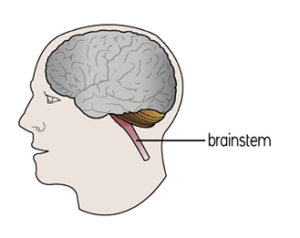The role of nerves in coughing and swallowing
These types of injuries affect certain nerves in the brainstem that send messages to the muscles of the throat. When this happens, you may hear that a person does not have a gag reflex. This means that the throat cannot cough well. This reflex also affects the ability to swallow. If the reflex is absent, a person can choke on food or liquids.
The risk of aspiration and pneumonia
Sometimes the food or liquids go into the lungs, called aspiration, and different types of breathing problems such as pneumonia may occur. Aspiration happens when there are problems taking a deep breath or coughing. This is more likely to occur when a person is not very awake or aware.
When extra breathing support is needed
An injury to certain nerves in the brainstem can also affect breathing. Some people may need extra help breathing for a period of time. A tracheostomy tube may be placed in the throat or the person may need a ventilator machine. As people become more awake and/or aware, the ability to cough and take a deep breath often improves. This is often a temporary measure until a person’s strength and alertness improve.
 These injuries are often in the brainstem area. For example, the breathing muscles may work but the person may be too tired or not alert enough to take deep breaths or to cough. Other brain injuries may affect a person’s ability to cough or clear mucous from the throat and lungs.
These injuries are often in the brainstem area. For example, the breathing muscles may work but the person may be too tired or not alert enough to take deep breaths or to cough. Other brain injuries may affect a person’s ability to cough or clear mucous from the throat and lungs.